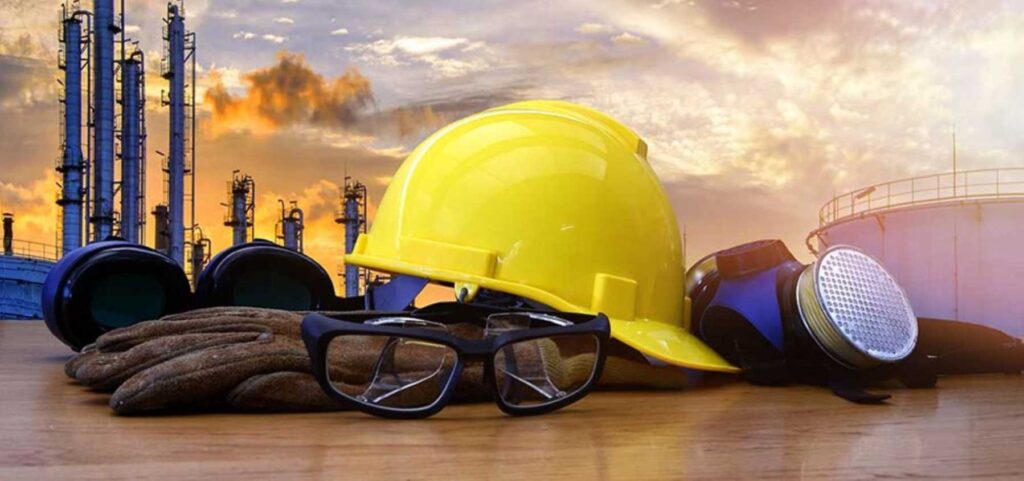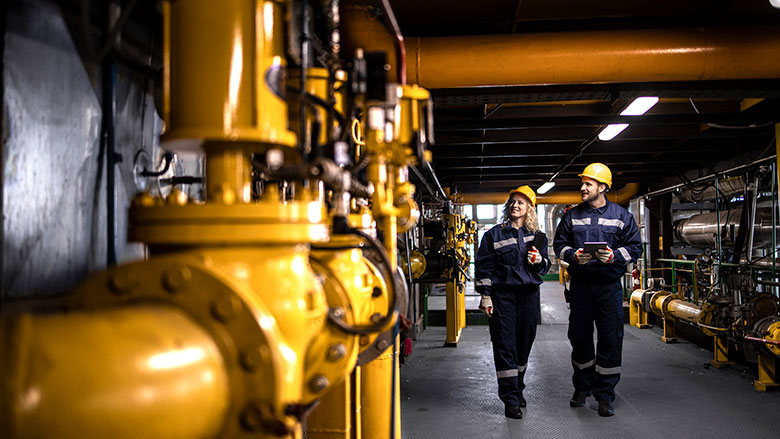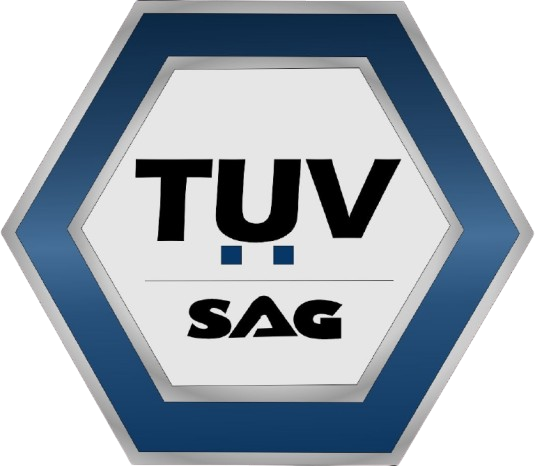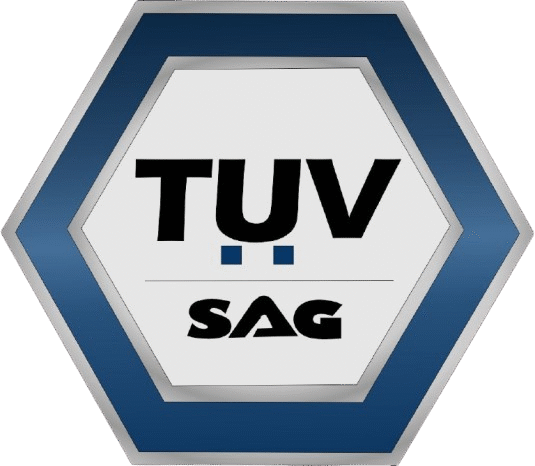
OIL & GAS SAFETY
Oil & Gas Safety
To satisfy particular site needs and operational demands, TUV SAG offers tailored Oil & Gas Safety training programs. These courses promote sustainable performance in upstream, midstream, and downstream operations while also improving safety and guaranteeing regulatory compliance.
1. Electrical Safety in Oil and Gas:
Professionals in the oil and gas industry gain vital knowledge about electrical hazards and safe work practices from this course. It covers grounding, electrical systems, explosion-proof equipment, and adherence to industry-specific electrical safety regulations.
Benefits:
- Reduced likelihood of electrical mishaps
- Enhanced adherence to IEC/NEC and site-specific standards
- Safer use of equipment in dangerous situations

2. Offshore Safety in Oil and Gas:
This course, which focusses on offshore platforms, covers survival skills, emergency evacuation, hazard identification, helicopter safety, and regulatory compliance.
Benefits:
- Enhanced preparedness of employees for offshore settings
- Improved evacuation preparation and emergency response
- Adherence to national offshore safety regulations, the IOGP, and the IMO
- Enhanced adherence to IEC/NEC and site-specific standards
- Safer use of equipment in dangerous situations
3. Gas Testing and Monitoring:
Practical skills in gas detection, atmospheric testing, equipment calibration, and real-time hazard control in high-risk or confined areas are imparted by this training.
Benefits:
- Early detection of gas hazards
- Using portable and stationary gas detectors accurately
- Enhanced emergency preparedness and site safety
4. Working at Heights in Oil and Gas:
Workers who complete the course are guaranteed to comprehend fall hazards, safe climbing techniques, how to use personal protective equipment (PPE) and the regulations unique to elevated work in oil and gas environments.
Benefits:
- Improved fall protection strategies
- Adherence to regional, OSHA, and API standards
- proficiency with anchor systems, ladders, and harnesses
5. Confined Space in Oil and Gas:
This course, which is specifically designed for entry and rescue personnel, covers gas monitoring, ventilation, permit systems, confined space hazards, and rescue planning in oil and gas applications.
Benefits:
- Safer operations in pipelines, tanks, and ships
- Complete knowledge of isolation and permit-to-work procedures
- Decreased chance of fatalities in confined spaces
6. First Aid and CPR for Oil and Gas:
This course, which is intended for on-site response teams, covers industry-relevant emergency care techniques like trauma response, cardiopulmonary resuscitation, and treating injuries unique to oilfields.
Benefits:
- Quicker reaction to incidents that occur on-site
- Life-saving abilities in isolated and offshore environments
- Certification in line with emergency procedures for oilfields
7. Rigging Safety in Oil and Gas:
Understanding rigging operations, equipment inspection, load limits, and safe lifting techniques in challenging and dangerous situations are all covered in this course.
Benefits:
- Better control over lifting operations
- Decrease in incidents involving rigging
- Adherence to API RP and ASME B30 standards
8. Fall Protection in Oil and Gas:
For both drilling and production sites, participants learn how to evaluate fall hazards and put safety measures in place like lifelines, harnesses, and anchor points.
Benefits:
- Reduction of fall incidents
- Adherence to ANSI Z359 and OSHA 1926
- Safer operations at higher elevations
9. Scaffold Safety in Oil and Gas:
Discusses how to properly assemble, operate, and disassemble scaffolds. Participants learn how to check the stability of scaffolds and make sure workers have safe access.
Benefits:
- Decreased injuries from scaffolding
- Compliance with API 54 and OSHA regulations
- Enhanced self-assurance among employees on higher platforms
10. Crane Safety in Oil and Gas:
Oil and gas crane safety emphasizes pre-use inspections, communication procedures, safe crane operation, and lifting plans for both onshore and offshore rigging operations.
Benefits:
- Better control and execution of lifts
- Reduction of tipping and load drop risks
- Improved planning and mechanical integrity
11. Lifting and Hoisting Safety in Oil and Gas:
Personnel are trained in load handling methods, risk assessment, equipment selection, and critical lift execution for drilling and maintenance operations through Lifting and Hoisting Safety in Oil and Gas.
Benefits:
- Decrease in the number of equipment failure incidents
- Safe performance of essential lifts
- Adherence to OSHA, LOLER, and API regulations
12. Welding and Cutting Safety in Oil and Gas:
Safety of cutting and welding in oil and gas discusses safe work procedures for hot work in explosive environments. includes planning for fire safety, handling gas cylinders, identifying hazards, and wearing personal protective equipment.
Benefits:
- Safer performance of field welding operations
- Avoiding burns, explosions, and flashbacks
- Respect for AWS, API 1104, and security guidelines
13. Radiation Safety in Oil and Gas:
The use of radiation in well logging and NDT is covered in this course. Participants gain knowledge of emergency response, exposure limits, shielding strategies, and monitoring techniques.
Benefits:
- Decreased exposure to radiation
- Complete adherence to national radiological safety codes and the IAEA
- Safer radiography testing and NORM handling
Our Services
TUV SAG
Your Trusted Brand in Industrial Excellence
We deliver end-to-end services that support quality, safety, and compliance across diverse sectors.
Our Office Address
Office #1 3rd Floor Jubail 31951 Kingdom of Saudi Arabia P.O. BOX #1357
Social Links


